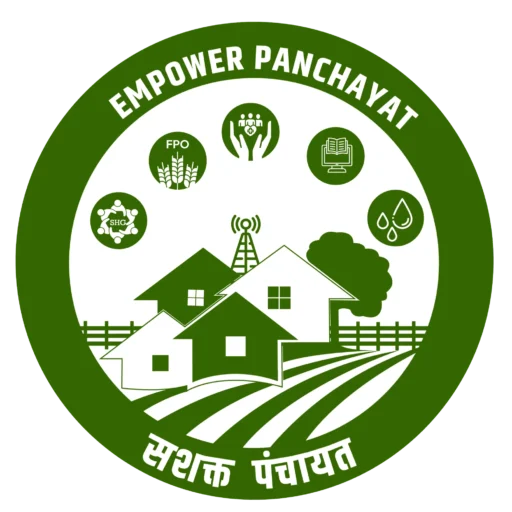
The Future of Gram Sabha: Embracing Digital Transformation
Imagine a village where every voice is heard, decisions are made fairly, and governance is completely transparent. No delays, no confusion—just true democracy at work. This is the promise of the Digital Gram Sabha, a bold step towards better village administration!
Thanks to Empower Panchayat’s application for conducting Digital Gram Sabhas with biometric verification, village meetings will now be organized, transparent, and efficient. The app securely stores villagers’ data, ensuring that only genuine residents participate in decision-making. And the journey begins with Tartarpur village, where the first Digital Gram Sabha is set to take place!
Why Digital Gram Sabha Matters
Digitizing Gram Sabha meetings can bridge the gap between governance and citizens, ensuring wider participation and better decision-making. The transition to a digital format offers several benefits over the traditional method, enhancing transparency, efficiency, and accessibility.
Key Differences: Traditional vs. Digital Gram Sabha
1.Participation and Accessibility
- Traditional Method: Requires villagers to be physically present, often leading to low attendance due to work commitments or migration.
- Digital Method: Enables remote participation through mobile phones or web-based platforms, ensuring inclusivity.
2.Minutes of Meetings and Documentation
- Traditional Method: Manually recorded minutes may lead to discrepancies or loss of information.
- Digital Method: Automatic transcription and secure storage of meeting records with digital signatures ensure authenticity.
3.Decision-Making Efficiency
- Traditional Method: Unstructured discussions can delay decisions due to a lack of proper record-keeping.
- Digital Method: Structured discussions, real-time polling, and AI-driven insights speed up decision-making.
4.Transparency and Accountability
- Traditional Method: Physical records can be manipulated, and decisions may not reach all stakeholders.
- Digital Method: Live-streamed meetings, instant notifications, and secure data storage prevent unauthorized modifications.
5.Monitoring and Implementation
- Traditional Method: Delays in conveying decisions to higher authorities hinder execution.
- Digital Method: Real-time reporting and integration with governance apps facilitate quick action and tracking.
6.Cost and Environmental Impact
- Traditional Method: Requires printed materials, travel, and physical venues, increasing costs and environmental impact.
- Digital Method: Reduces paper use, travel expenses, and carbon footprint by facilitating virtual participation
7.Feedback Collection
- Traditional Method: It is hard to collect everyone’s opinion, especially after the meeting.
- Digital Method: People can give feedback anytime through the app or form.
8.Youth Engagement
- Traditional Method: Young people often skip meetings as they find them boring and not useful.
- Digital Method: Youth find digital meetings more modern and are more likely to take part.
9.Record Sharing with Villagers
- Traditional Method: People have to go to the Panchayat office to see records. Many do not go or even know where to ask.
- Digital Method: Records can be seen on mobile or computer. Everyone can check the information easily.
10. Attendance Verification
- Traditional Method: Often, Gram Sabha meetings are held without confirming if enough registered villagers (quorum) are present. Because of this, many decisions made in these meetings are not officially accepted.
- Digital Method: With biometric attendance of pre-registered voters (like fingerprint, face scan), the app confirms that the right number of people are present before the meeting starts. This makes the meeting valid and ensures that the decisions taken are officially recognized.
A Hybrid Future: The Best of Both Worlds
The digitization of Gram Sabhas is not about replacing traditional methods but enhancing them. A hybrid model that blends physical meetings with digital tools can ensure maximum participation, accurate record-keeping, and effective governance.
This is important because not everyone in the village has a smartphone or knows how to use digital apps. Some people, especially elders, still prefer face-to-face meetings. A hybrid model helps include both groups.
As rural India embraces digital transformation, Gram Sabha can evolve into a more robust institution—truly empowering citizens and strengthening democracy at the grassroots level.
In this model, meetings can still be held in person, but tools like mobile apps can be used for voting, recording minutes, and sharing updates. This way, even those who are outside the village or cannot attend in person can take part.
Starting with small steps like using a phone to record decisions or showing live meetings on a screen can help villagers slowly adopt this change. Youth groups or trained helpers can guide others during meetings. With time, this mix of old and new ways can bring real change.
With the Digital Gram Sabha, governance is no longer a slow, paperwork-heavy process—it’s quick, transparent, and truly democratic. The future of Atmanirbhar Gram (Self-Reliant Villages) isn’t just an idea anymore. It’s happening—one village at a time!
Last modified: April 16, 2025


